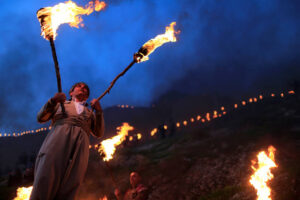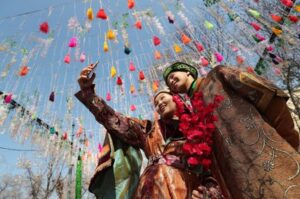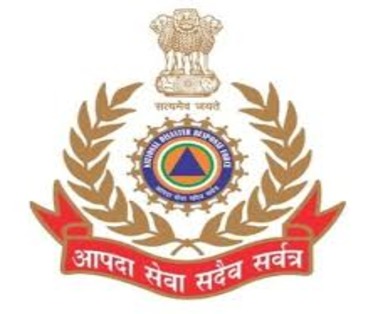“Discover the vibrant traditions and rich symbolism of Nowruz, the Persian New Year celebration spanning over 3,000 years. Explore its history, customs, and significance, and learn how this ancient festival unites diverse communities worldwide in joyous celebration. Happy Nowruz!”
Introduction:
Nowruz, the Persian New Year, is a celebration deeply rooted in tradition, culture, and symbolism. Derived from the Persian words “now” meaning new and “ruz” meaning day, Nowruz marks the beginning of spring and the renewal of nature. This ancient festival has been observed for over 3,000 years, transcending geographical boundaries and religious affiliations, and is celebrated by millions of people worldwide. In this blog, we delve into the rich tapestry of Nowruz, exploring its history, customs, and significance.

History and Origins:
The origins of Nowruz can be traced back to ancient Persia, with roots in Zoroastrianism, one of the world’s oldest religions. According to legend, Nowruz began as a Zoroastrian festival celebrating the triumph of light over darkness and the arrival of spring. It was believed that on the vernal equinox, the sun returned to bless the earth with warmth and fertility, marking the start of a new year.
Over time, Nowruz evolved into a secular celebration, embraced by various cultures and civilizations influenced by Persian traditions. Today, Nowruz is observed not only by Iranians but also by people in Afghanistan, Azerbaijan, Central Asia, the Kurdish regions, and other communities around the world.
Customs and Traditions:
Nowruz is a festival steeped in rituals and customs, each symbolizing renewal, prosperity, and the triumph of good over evil. While customs may vary among different regions and communities, some elements are universally observed:
1. Haft Seen Table: Central to Nowruz celebrations is the Haft Seen table, an arrangement of seven symbolic items, each starting with the Persian letter “seen” (س). These items typically include Sabzeh (sprouted wheat or lentils symbolizing rebirth), Samanu (sweet wheat pudding representing affluence), Senjed (dried oleaster fruit symbolizing love), Sir (garlic symbolizing medicine), Sib (apple symbolizing beauty and health), Somāq (sumac berries symbolizing the sunrise), and Serkeh (vinegar symbolizing patience and aging). Each item carries its own significance and is believed to bring blessings for the new year.

2. Spring Cleaning (Khaneh Tekani): Prior to Nowruz, families engage in thorough cleaning and decluttering of their homes, symbolizing the removal of negativity and preparation for a fresh start.
3. Chaharshanbe Suri: On the eve of the last Wednesday before Nowruz, people gather around bonfires and jump over the flames, symbolically purifying themselves of misfortune and welcoming the new year with warmth and light.
4. Visiting Family and Friends: Nowruz is a time for gathering with loved ones, exchanging gifts, and paying visits to friends and relatives, fostering bonds of kinship and community.
5. Traditional Foods: Nowruz is incomplete without indulging in a feast of traditional Persian dishes, such as Sabzi Polo ba Mahi (herb rice with fish), Ash-e Reshteh (noodle soup), and various sweets and pastries.
6. Nowruz Khankeh: In some communities, Nowruz Khankeh, a special charity tradition, involves individuals dressing up in costumes and going door to door to collect offerings for the less fortunate, spreading joy and goodwill.
Significance and Symbolism:
Nowruz holds deep symbolic significance, embodying themes of renewal, unity, and hope. As nature awakens from its winter slumber, Nowruz serves as a reminder of the cyclical nature of life and the eternal renewal of the universe. It fosters a sense of unity among diverse communities, transcending cultural and religious differences in celebration of shared heritage and humanity.
Moreover, Nowruz embodies the resilience and spirit of the Iranian people, who have preserved their cultural traditions despite adversities throughout history. In times of social and political upheaval, Nowruz serves as a beacon of hope, reminding individuals of their inherent capacity for renewal and regeneration.
Global Celebration:
Today, Nowruz is celebrated on a global scale, with festivities taking place in countries far beyond the borders of Persia. In 2010, UNESCO recognized Nowruz as an Intangible Cultural Heritage of Humanity, acknowledging its significance as a symbol of peace and solidarity among peoples of different cultures and faiths.
In cities around the world, Nowruz festivals bring together diverse communities, showcasing vibrant displays of music, dance, art, and cuisine. From the bustling streets of Tehran to the bustling metropolises of London, New York, and Sydney, Nowruz unites people in joyous celebration, bridging cultural divides and fostering mutual understanding.
Conclusion:
Nowruz, the Persian New Year, stands as a testament to the enduring legacy of ancient traditions and the universal human longing for renewal and rebirth. With its rich tapestry of customs, symbols, and rituals, Nowruz embodies the spirit of springtime, heralding the arrival of a new year filled with hope, prosperity, and blessings. As we join hands in celebrating Nowruz, let us embrace its message of unity and solidarity, fostering a world where diversity is celebrated, and peace reigns supreme. Happy Nowruz! Nowruz Mobarak!
Disclaimer:
The information provided in this blog is for educational and informational purposes only. While every effort has been made to ensure the accuracy and completeness of the content, we make no representations or warranties of any kind, express or implied, about the completeness, accuracy, reliability, suitability, or availability with respect to the blog or the information, products, services, or related graphics contained in the blog for any purpose. Any reliance you place on such information is therefore strictly at your own risk. We will not be liable for any losses or damages in connection with the use of this blog.




